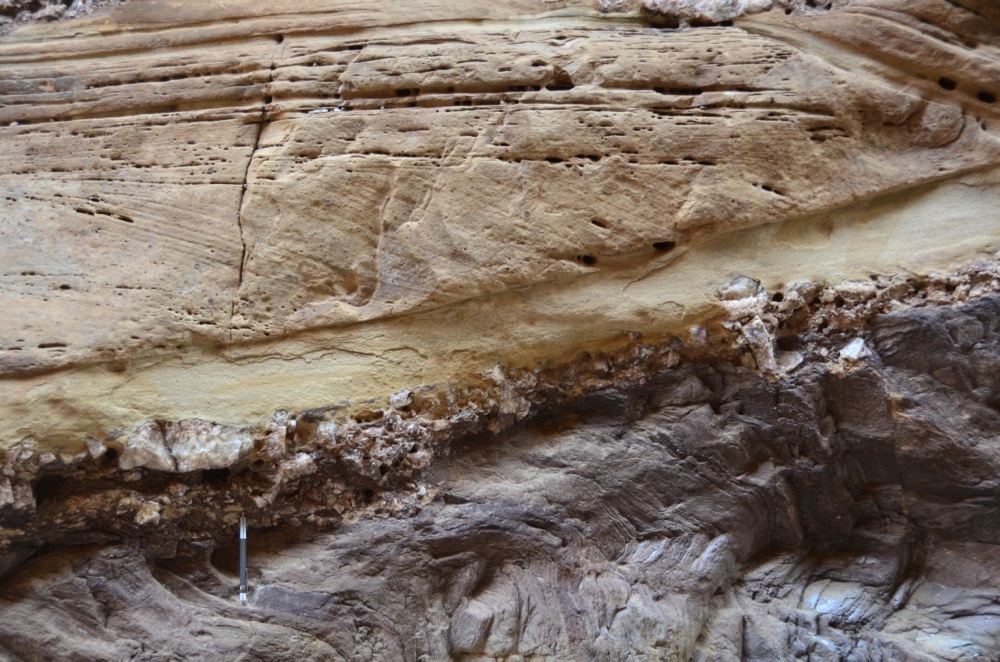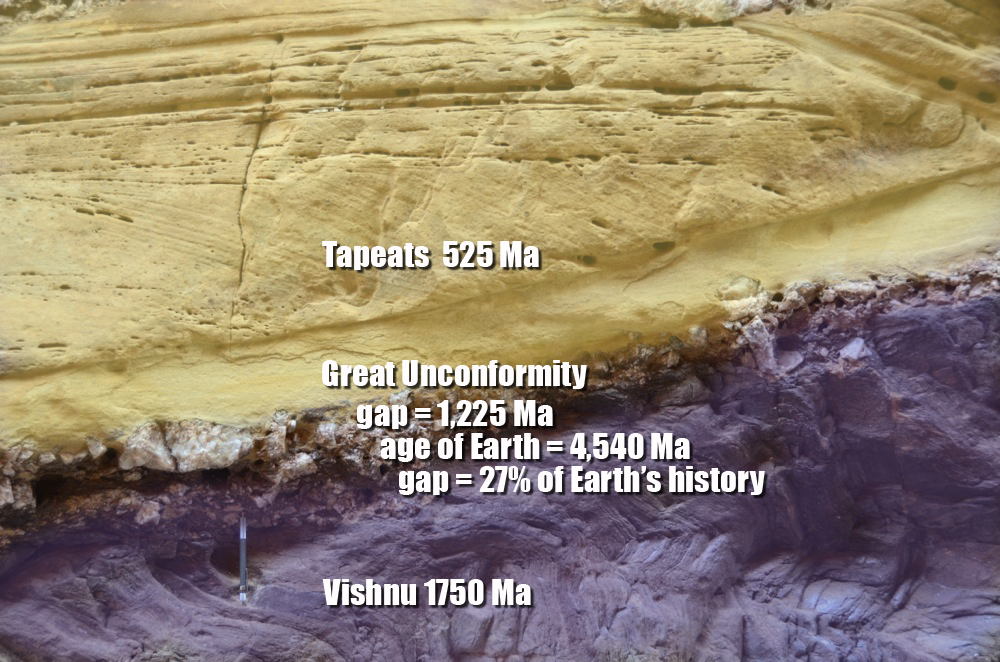Visitors to Grand Canyon gaze awestruck at vermillion rock layers stacked like plates, one after another from rim to gorge, an endless parade of Earth’s history basking in the fierce Arizona sun. Beholding Grand Canyon can really make you stop and think. You think of how the expanse of time represented by those layers dwarfs the pitiful few score years we are privileged to meander the surface.
 But as impressive as the expanse of time exposed in Grand Canyon is, there is something most of these visitors miss. What you cannot readily observe is that between the layers in Grand Canyon, vastly more time is missing than is recorded.
But as impressive as the expanse of time exposed in Grand Canyon is, there is something most of these visitors miss. What you cannot readily observe is that between the layers in Grand Canyon, vastly more time is missing than is recorded.
When time is missing between layers, geologists call this an unconformity. Unconformities can happen several different ways: the vanished rock might have been uplifted and eroded away, or the rock may never have formed at all. Geologists parse these time gaps into many sub-categories—nonconformity, paraconformity, disconformity—but these distinctions are unimportant. What matters is that a bunch of time is missing.
In Grand Canyon, one time gap stands out from all others: the Great Unconformity. The Great Unconformity is the combination of rock layers separated by gulfs of time that stagger the mind. In Blacktail Canyon (river mile 120), for example, one can put one’s hand on a thin line separating two rock units—the lower, the Vishnu Schist, dated at 1750 million years of age (Ma), the higher, the Tapeats Sandstone, dated at 525 Ma. The gap between them is 1,225 Ma, and since the Earth is 4,540 Ma, that single small gap—that gravel-fringed line one can cover with one’s finger—represents 27% of Earth’s entire history.


It’s humbling to comprehend this gap and its unrecorded world. Imagine the unseen, unnamed mountain ranges that rose and fell during this time, peaks as harrowing as K2 and higher than Everest challenging the sky even as relentless rains lashed them back into the muddy plains. Imagine the metronome of uncountable waves crashing against shoreline rocks, rolling up beaches without kelp, without crabs, without seagulls—empty save for the bacterial skyscrapers we call stromatolites, silent photosynthetic sentinels wafting oxygen into a wispy, starved atmosphere. And behind those beaches, endless expanses of bare stone devoid of a single plant, not a blade of grass to bring a flash of green to barren, brown expanses.
Imagine the sunsets and sunrises that came, one following another, during that missing time—ruddy, staccato flashes from a lost world, a strange sun setting over strange oceans, never seen by any organism because vision had not yet evolved. Although days on planet Earth are getting progressively longer, if we allow 24 hour days for convenience of calculation, then during the time represented by the Great Unconformity the sun rose and set half a trillion times.
John McPhee, author of so many eloquent books about the wonders of geology, notes in Assembling California that if a half billion year unconformity occurred in the right place, it would have erased all of Grand Canyon—the carved gorge, the flat-lying Paleozoic rocks, all of it. There must have been other Grand Canyons in the lost world of the Great Unconformity, unknown and unexplored glories whose majestic waterfalls and gnashing rapids echo no longer from bare canyon walls. When I think of the Great Unconformity, I mourn for the lost beauty of a world we will never know.
While geologists have explanations for unconformities, and have worked out in detail much of the story of how Grand Canyon formed, creationists have a very different take on the Great Unconformity. For them, the Great Unconformity records not missing eons, but erosion at the start of Noah’s Flood. We’ll explore that mistaken interpretation in part 2.
